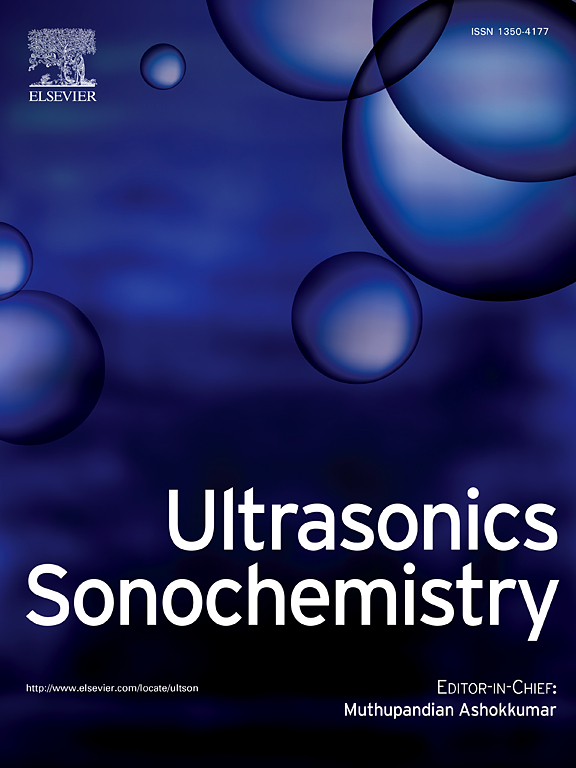Nano-reduction of whey protein using ultra-sonication as a novel approach to improve its applicability in food industry
IF 8.7
1区 化学
Q1 ACOUSTICS
引用次数: 0
Abstract
The present study was carried to evaluate the effect of size reduction using ultrasonication on functionality and bioactivity of whey protein isolate (WPI). The results showed that ultrasonication was able to reduce particle size of whey from 1.025 µm to 549 nm. The polydispersity index and zeta potential increased subsequently upon ultrasonication from 0.22 to 0.48 and −12 to −21 mV confirming narrow range of particle size distribution and enhanced colloidal stability. The SEM of non-treated whey showed dense spherical structure whereas upon ultrasonication the structure of protein granules changes to polygon. Size of granule was reduced and distortion in shape was observed. The ultrasonicated and native whey were characterized for functional properties viz. foaming, emulsifying, water and oil absorption capabilities. The solubility and hydrophobicity of whey before and after ultrasonication were determined. The WPI had higher hydrophobicity than ultrasonicated WPI which could be owed to the protein unfolding due to acoustic cavitation effect of ultrasonication. Water and oil absorption capacity of WPI were also affected by ultrasonication, water absorption capacity was decreased whereas oil absorption capacity was increased upon ultrasonication. The nutraceutical properties of WPI viz. antioxidant, antimicrobial, antihypertensive, antilipidemic, and antiproliferative activities were also found to increase significantly upon ultrasonication. Overall the study suggests that nanoreduction is a novel approach to improve the applicability of WPI in the emerging functional food industry as the ultra-sonication was profusely able to tailor the functionality and physiological implications of WPI.
求助全文
约1分钟内获得全文
求助全文
来源期刊

Ultrasonics Sonochemistry
化学-化学综合
CiteScore
15.80
自引率
11.90%
发文量
361
审稿时长
59 days
期刊介绍:
Ultrasonics Sonochemistry stands as a premier international journal dedicated to the publication of high-quality research articles primarily focusing on chemical reactions and reactors induced by ultrasonic waves, known as sonochemistry. Beyond chemical reactions, the journal also welcomes contributions related to cavitation-induced events and processing, including sonoluminescence, and the transformation of materials on chemical, physical, and biological levels.
Since its inception in 1994, Ultrasonics Sonochemistry has consistently maintained a top ranking in the "Acoustics" category, reflecting its esteemed reputation in the field. The journal publishes exceptional papers covering various areas of ultrasonics and sonochemistry. Its contributions are highly regarded by both academia and industry stakeholders, demonstrating its relevance and impact in advancing research and innovation.
 求助内容:
求助内容: 应助结果提醒方式:
应助结果提醒方式:


